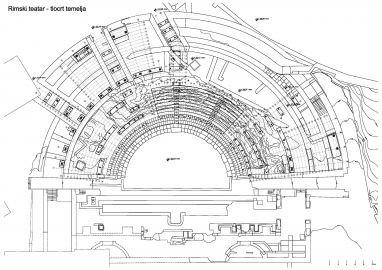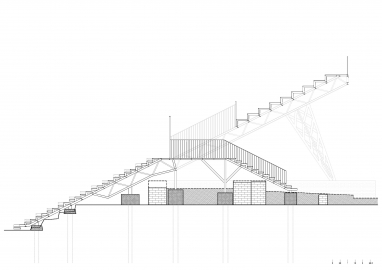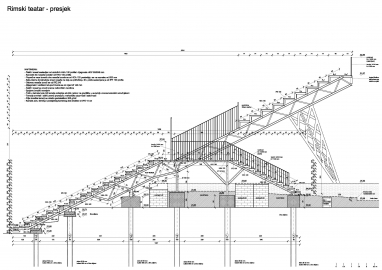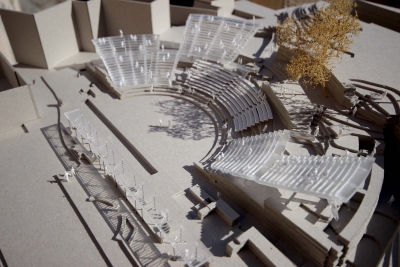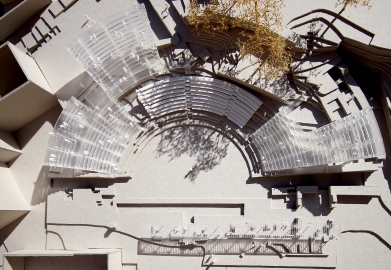Reconstruction of the Roman Theater
The archaeological remains of the Roman theatre are located in the heart of ancient town of Pula, on the eastern slope of its historic core. The reconstruction project involved a partial restoration of the cavea (seating section), enabling the use for performing arts.
Above the traces of a Roman theatre a new perimeter was built.
Fragments of lost Platonic order were superimposed on the ancient leftovers.
Steel construction was confronted with stone’s stereometric mass.
Into an archeologic park a stage for contemporary performances was introduced.
Cultural landscape was immersed into culture’s true nature.
Above the old Rome stands a new Babylon.
The fact that subsequent medieval and post-medieval strata overlay parts of the original footprint of the theatre precluded any plans for a complete reconstruction of its original perimeter. The reconstruction, thus, encompassed much of the lower tier of the cavea and two segments of the upper one. This solution developed a 1,200 seating capacity for the audience. To ensure their effective circulation the design has revitalised and reinterpreted six original antique entrances.
A reduction of the cavea due to the subsequent medieval and post-medieval strata has produced two structural elements made of three-dimensional steel grille. The form of the new steel seating follows the layout of the former antique period cavea, with a passage set between the upper and lower tiers from which steps rise and descend, providing ingress and egress to and from the seating areas. This passage is conceived as the theatre's primary infrastructural spine; it houses all the electrical installations necessary for lighting, sound system, and an optical network. Unlike the steel seating sections, the central part of the cavea is done in white concrete without a support structure, laid directly on the cleaned bedrock, forming an integral part of the space's new topography.
In order to minimise the impact of new excavation associated with the reconstruction project at this archaeological site the steel structure was designed in a manner that transfers loads to the fewest possible footings, with a part of the seating area designed as a cantilevered structure. With regard to the structural statics, the load-bearing steel grid with its supporting steel columns forms a fixed frame having a span of about nine and a half by four metres. The calculations for this structure paid particular attention to the limit state of its serviceability and to meeting the criterion of minimum natural frequency (structural oscillation) in order to avoid the occurrence of resonance in use.

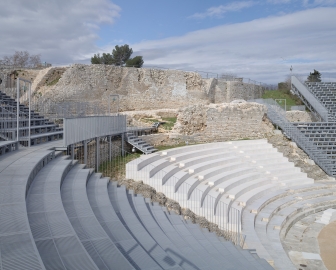 © Bas Princen
© Bas Princen
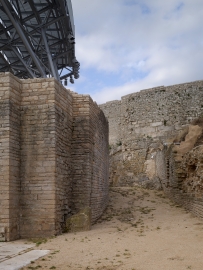 © Bas Princen
© Bas Princen
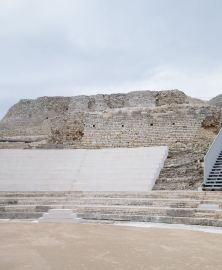 © Bas Princen
© Bas Princen
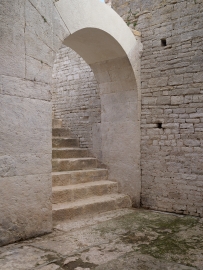 © Bas Princen
© Bas Princen
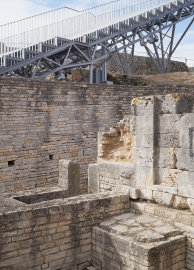 © Bas Princen
© Bas Princen

